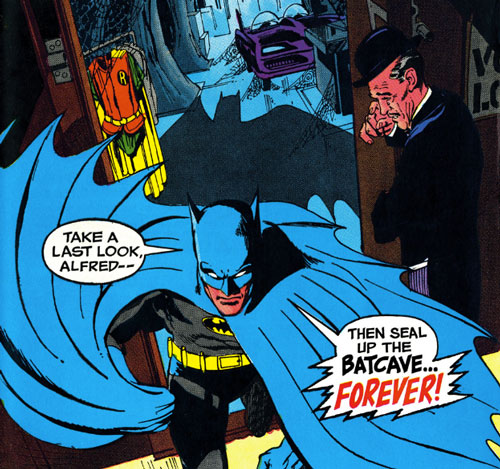Apr 16, 2020

The 1964 "New Look" facelift and, of course, our beloved 1966 TV show created a boom in Batman comics... briefly. The sales numbers dropped to their lowest point yet after the show was cancelled. Meanwhile, diehard fans of the comics, whose vision of Batman couldn't have been farther from how he was portrayed on the show, were fed up and demanding a darker version of the character, a return to his roots.
These fans, many of whom read, and wrote for, the Batmania fanzine, were cheering for the darker look that new artist Neal Adams was giving the Caped Crusader in The Brave and the Bold. Editor Julius Schwartz found that a drastic change was the only way forward. That drastic change came in Batman 217 (above), in which Robin went off to college, and Batman and Alfred left the Batcave and Stately Wayne Manor behind.
In this episode, we're joined by author Ian Gordon to discuss the changes that were made to the comics between 1968 and 1970 and the forces that drove those changes.
Plus, Bobby Valentin's two different versions of the Batman theme (1966 and 1989 varieties), and your mail about the Roast Godzilla episode.
Collectors Call TV: Ralph Garman's Batman collection
The Age of TV Heroes, by Jason Hofius and George Khoury
Bibliography of past episodes that informed this one:
- The Batmania newsletters: Episodes 91 and 92
- Glen Weldon's The Caped Crusade: Batman and
the Rise of Nerd Culture
: Episode 83
- Batman's 1964 "New Look," and how the TV show affected the comics: Episode 34
- The "bat-coffee table book," Batman: A Celebration of the
Classic TV Series: Episode 55
- Batman (1989): Episode 85
Bobby Valentin "Batman" (1989)